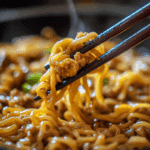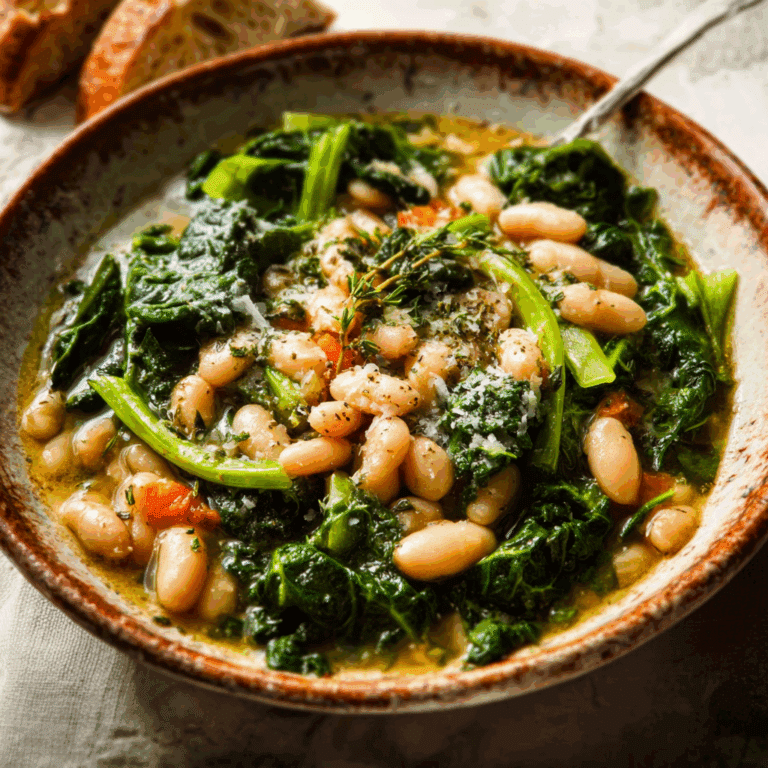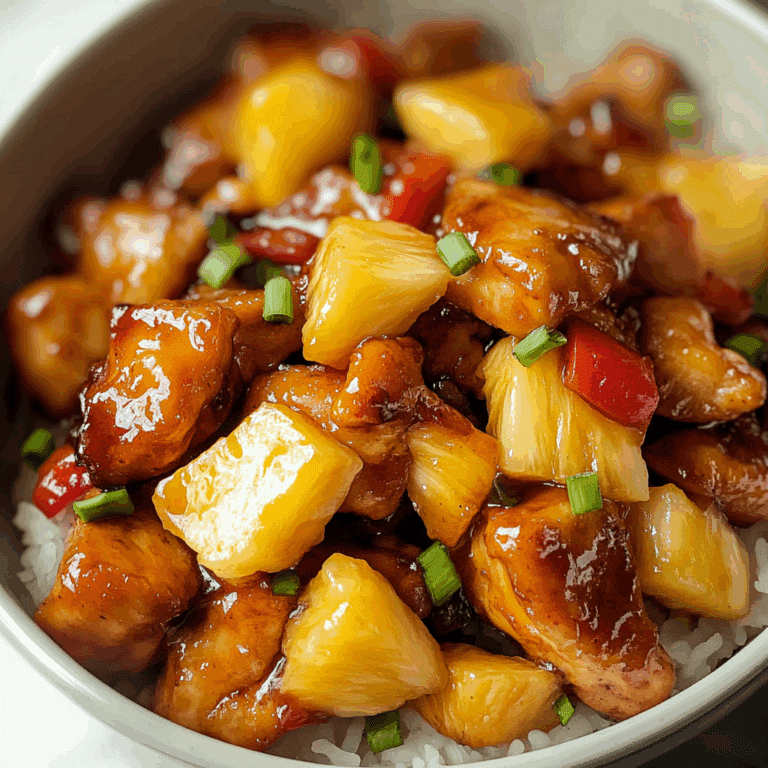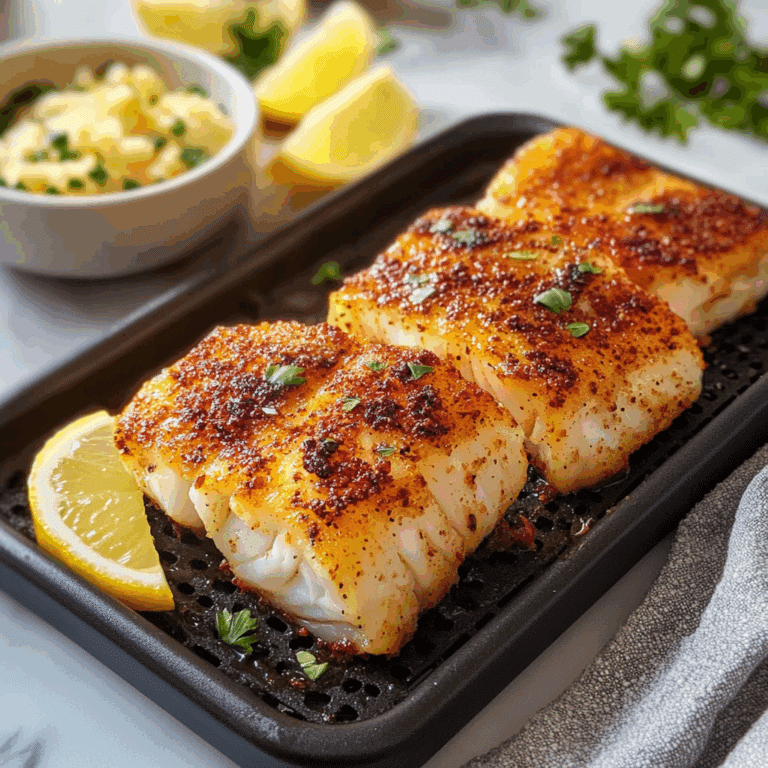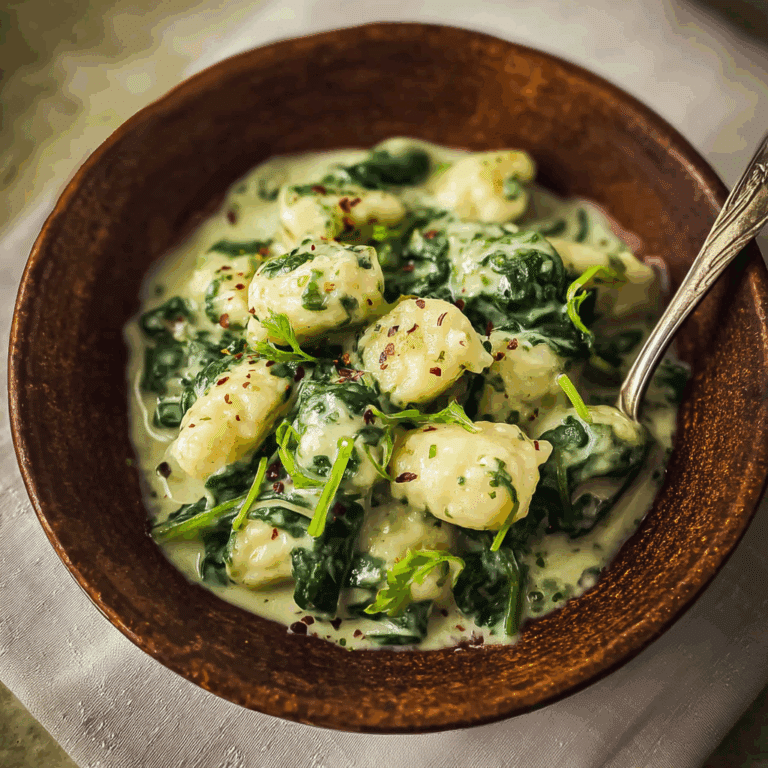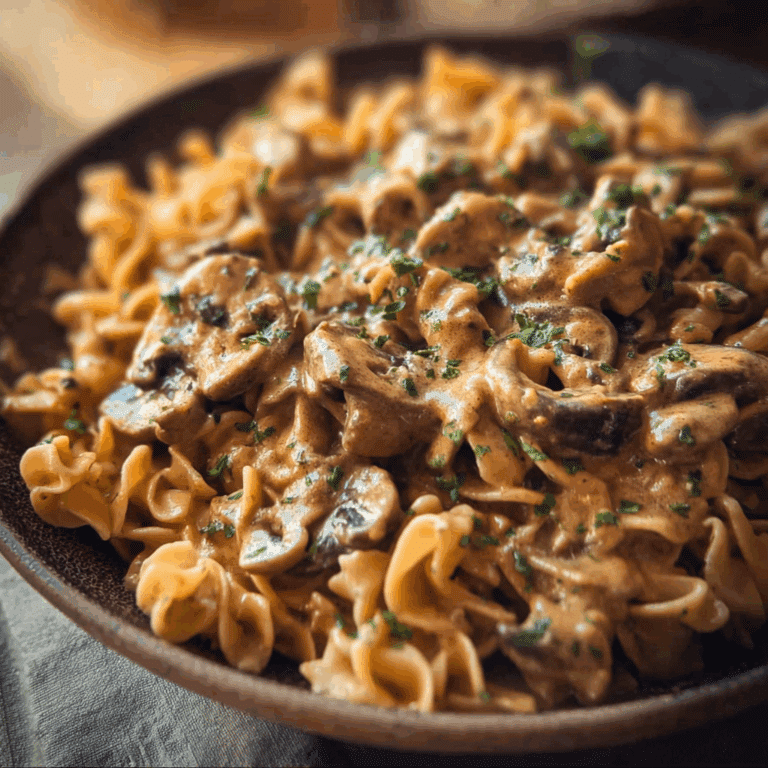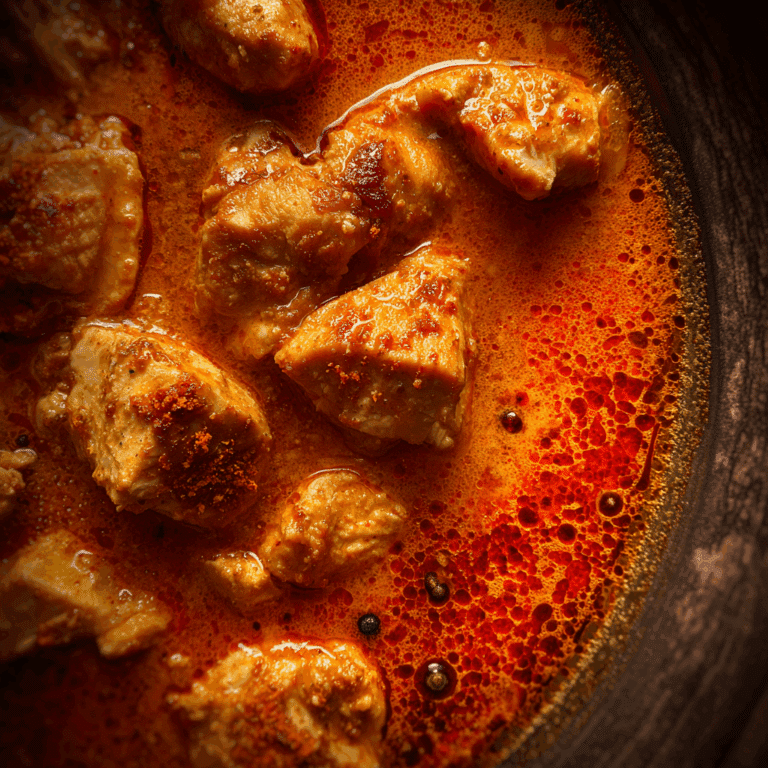How to Make Delicious Hibachi Noodles
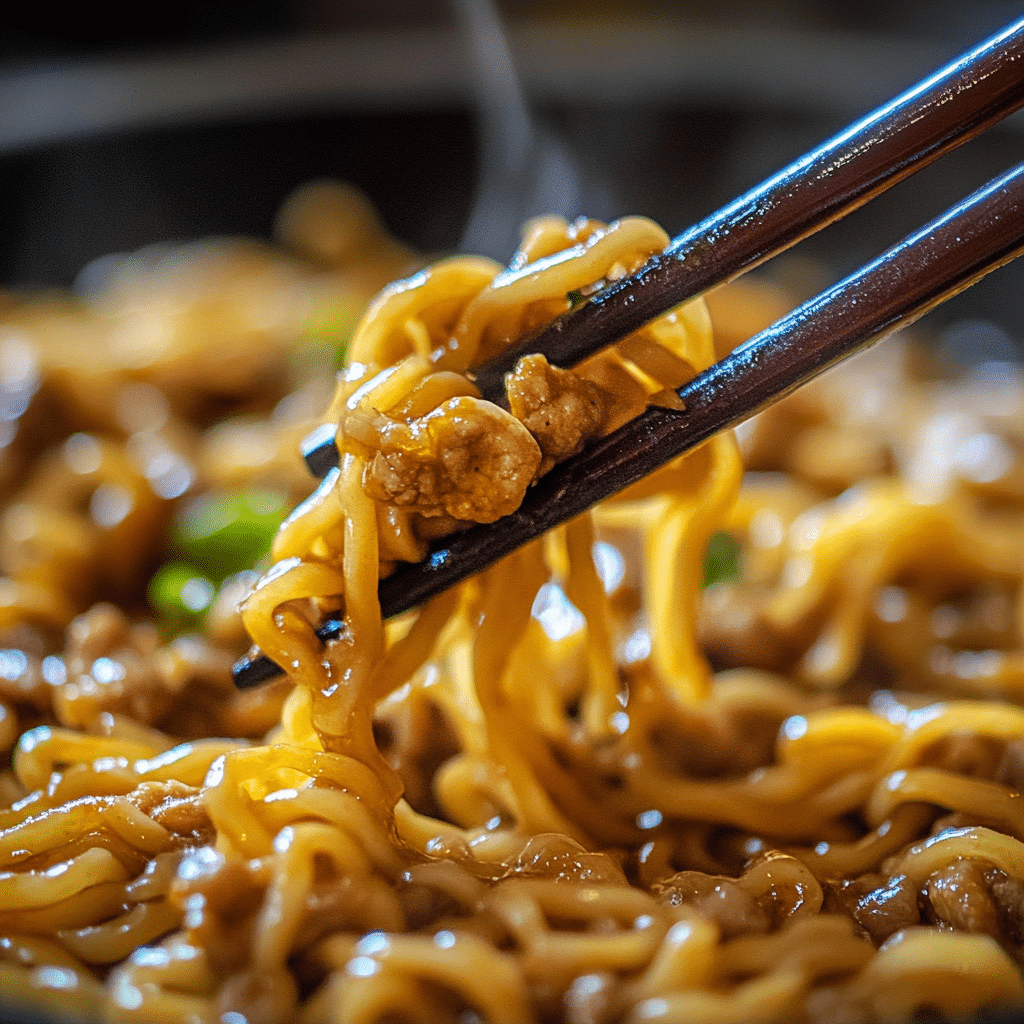
If you’re craving a flavorful, comforting, and quick meal, Hibachi Noodles are the perfect dish to satisfy your taste buds right at home. This delicious Japanese-inspired stir-fry combines tender noodles with a savory blend of soy sauce, garlic, fresh vegetables, and a hint of sesame oil, creating a mouthwatering experience that’s simple to prepare. Whether you’re a seasoned cook or just starting out, this recipe will guide you through making Hibachi Noodles that are packed with flavor and perfect for any occasion.
Why You’ll Love This Recipe
- Quick and Easy: Ready in under 30 minutes, perfect for busy weeknights when you want something delicious without the wait.
- Customizable Flavor: Adaptable ingredients let you tailor the taste to your preferences and dietary needs.
- Balanced Nutrition: A wonderful combination of protein, veggies, and carbs for a filling and wholesome meal.
- Restaurant Quality at Home: Enjoy authentic hibachi-style flavors without leaving your kitchen.
- Great for All Skill Levels: Simple steps make this a fun recipe for both beginners and home chefs alike.
Ingredients You’ll Need
The magic of Hibachi Noodles lies in straightforward, fresh ingredients that come together beautifully. Each item adds its own texture, aroma, and flavor, ensuring your dish tastes just like your favorite hibachi spot.
- Soba or Yakisoba Noodles: The foundation of the dish, these noodles have a perfect chew and absorb the sauce beautifully.
- Soy Sauce: Brings that signature salty and umami flavor essential to hibachi dishes.
- Garlic: Fresh minced garlic adds a pungent warmth that wakes up the palate.
- Vegetables: Bell peppers, zucchini, carrots, and onions offer crunch, color, and nutrition.
- Sesame Oil: A small drizzle gives the noodles a toasty, nutty richness.
- Green Onions: Adds freshness and a mild bite as a finishing touch.
- Protein of Choice (Optional): Chicken, shrimp, or tofu to make the dish more hearty.
- Fresh Ginger: Optional but highly recommended for a zesty kick.
- Vegetable Oil or Canola Oil: For stir-frying, with a neutral flavor that lets the other ingredients shine.
Variations for Hibachi Noodles
One of the best things about Hibachi Noodles is how versatile they are. Feel free to experiment with ingredients to match your tastes or dietary preferences. Easy tweaks can transform this into a new favorite every time.
- Vegetarian Version: Skip the meat and add extra veggies like mushrooms and snap peas for a vibrant, plant-based meal.
- Spicy Kick: Add a dash of chili flakes or drizzle with sriracha for heat that wakes up your senses.
- Low-Carb Adaptation: Substitute noodles for spiralized zucchini or shirataki noodles for a keto-friendly option.
- Garlic Butter Sauce: Introduce a pat of garlic butter at the end for an indulgent, rich flavor twist.
- Seafood Delight: Swap chicken for fresh shrimp or scallops to enjoy a coastal-inspired version.

How to Make Hibachi Noodles
Step 1: Prepare Your Ingredients
Start by boiling your noodles according to package instructions until just tender, then drain and set aside. Chop your vegetables into bite-sized pieces and mince the garlic and fresh ginger if using.
Step 2: Heat the Pan
Preheat a large skillet or wok over medium-high heat. Add a tablespoon of vegetable or canola oil, making sure the surface is evenly coated and hot enough for stir-frying.
Step 3: Cook the Protein
If you’re using chicken, shrimp, or tofu, add it to the pan now. Cook until it’s just done and lightly browned, then remove from the pan and set aside to keep warm.
Step 4: Stir-Fry the Vegetables
Add a bit more oil if needed, then toss in your chopped vegetables along with minced garlic and ginger. Stir-fry quickly for 3-4 minutes until the veggies become tender but still crisp and vibrant.
Step 5: Combine Noodles and Sauce
Return the cooked protein to the pan along with your drained noodles. Pour in soy sauce and a drizzle of sesame oil, tossing constantly to evenly coat everything and heat through.
Step 6: Final Touches
Sprinkle sliced green onions over the top and give one last toss. Taste and adjust seasoning with extra soy sauce or a pinch of salt if necessary. Serve piping hot and enjoy!
Pro Tips for Making Hibachi Noodles
- Use High Heat: Stir-fry over high heat to get that signature slightly charred flavor and keep vegetables crisp.
- Don’t Overcook Noodles: Drain them while still al dente so they don’t turn mushy in the pan.
- Prep Ingredients Beforehand: Have everything chopped and ready to go since stir-frying moves fast.
- Fresh Is Best: Use fresh garlic, ginger, and vegetables to amplify the dish’s flavor profile.
- Limit Soy Sauce: Start with a modest amount and add gradually to avoid overpowering saltiness.
- Add Sesame Oil Last: Adding sesame oil at the end preserves its delicate nutty aroma.
How to Serve Hibachi Noodles
Garnishes
Enhance your Hibachi Noodles with garnishes like toasted sesame seeds, chopped cilantro, or a sprinkle of crushed peanuts for added texture and flavor bursts.
Side Dishes
Pair your noodles with classic sides such as steamed edamame, miso soup, or a fresh seaweed salad to create a balanced and satisfying meal.
Creative Ways to Present
Serve Hibachi Noodles in individual bowls for a casual vibe or plate them elegantly with a wedge of lemon and a drizzle of spicy mayo for a restaurant-style presentation.
Make Ahead and Storage
Storing Leftovers
Place any leftover Hibachi Noodles in an airtight container and refrigerate for up to 3 days to keep the flavors fresh and ingredients safe.
Freezing
While not ideal for freezing cooked noodles due to texture changes, you can freeze cooked proteins and veggies separately for up to a month and toss with freshly cooked noodles later.
Reheating
Reheat leftovers in a hot skillet with a splash of water or soy sauce to revive moisture and prevent drying out, stirring frequently until warmed through.
FAQs
Can I use any type of noodles for Hibachi Noodles?
Absolutely! While soba or yakisoba noodles are traditional, you can substitute with spaghetti, ramen, or udon noodles depending on what you have on hand.
Is this recipe gluten-free?
You can make it gluten-free by using tamari or gluten-free soy sauce and choosing gluten-free noodles, like rice noodles or certain soba brands.
Can I make Hibachi Noodles vegan?
Definitely! Just omit any animal-based protein and use tofu or extra vegetables, and make sure your soy sauce and other ingredients are vegan-friendly.
How spicy are Hibachi Noodles?
The basic recipe is mild, but you can easily add spice by incorporating chili flakes, hot sauce, or spicy oil to your taste.
What toppings go well with Hibachi Noodles?
Popular toppings include toasted sesame seeds, chopped scallions, shredded nori, or a squeeze of fresh lime for brightness.
Final Thoughts
If you want a meal that’s quick, flavorful, and satisfying, you really must give Hibachi Noodles a try. With simple ingredients and easy steps, it’s a recipe that brings the joy of hibachi dining straight to your kitchen. Experiment with your favorite veggies and proteins, and enjoy the delicious, comforting flavors every time you make it.
Related Posts
- Sweet and Savory Pineapple Chicken and Rice Recipe
- LOADED POTATO RANCH CHICKEN CASSEROLE – Comfort Food Delight
Hibachi Noodles
Hibachi Noodles are a quick, flavorful Japanese-inspired stir-fry dish combining tender soba or yakisoba noodles with soy sauce, garlic, fresh vegetables, and a touch of sesame oil. Perfect for busy weeknights, this customizable and balanced meal provides restaurant-quality hibachi flavors at home, suitable for all skill levels and customizable to dietary preferences.
- Prep Time: 10 minutes
- Cook Time: 15 minutes
- Total Time: 25 minutes
- Yield: 4 servings 1x
- Category: Main Course
- Method: Stir-Frying
- Cuisine: Japanese
- Diet: Gluten Free (if using tamari and gluten-free noodles)
Ingredients
Noodles
- 8 oz soba or yakisoba noodles
Sauce & Oils
- 3 tbsp soy sauce (or tamari for gluten-free)
- 1 tbsp sesame oil
- 2 tbsp vegetable or canola oil
Aromatics
- 3 cloves garlic, minced
- 1 tsp fresh ginger, minced (optional but recommended)
Vegetables
- 1 bell pepper, sliced
- 1 small zucchini, sliced
- 1 medium carrot, julienned or thinly sliced
- 1 small onion, sliced
- 2 green onions, sliced (for garnish)
Protein (Optional)
- 6 oz chicken breast, shrimp, or tofu, cut into bite-sized pieces
Instructions
- Prepare Your Ingredients: Boil the soba or yakisoba noodles according to package instructions until just tender. Drain and set aside. Chop all vegetables into bite-sized pieces. Mince garlic and fresh ginger, if using.
- Heat the Pan: Preheat a large skillet or wok over medium-high heat. Add 1 tablespoon of vegetable or canola oil, coating the surface evenly. Ensure the pan is hot enough for stir-frying.
- Cook the Protein: Add the chicken, shrimp, or tofu to the pan. Cook until just done and lightly browned. Remove from the pan and set aside, keeping it warm.
- Stir-Fry the Vegetables: If needed, add a bit more oil to the pan. Toss in the chopped vegetables, minced garlic, and minced ginger. Stir-fry for 3-4 minutes until the vegetables are tender-crisp and vibrant.
- Combine Noodles and Sauce: Return the cooked protein to the pan along with the drained noodles. Pour in soy sauce and drizzle with sesame oil. Toss constantly to evenly coat and heat through.
- Final Touches: Sprinkle sliced green onions on top and give everything one last toss. Taste and adjust seasoning with extra soy sauce or salt if needed. Serve immediately, piping hot.
Notes
- Use high heat to achieve a slightly charred flavor and keep vegetables crisp.
- Drain noodles while still al dente to avoid mushiness.
- Prepare all ingredients before starting to stir-fry as the cooking process is fast.
- Use fresh garlic, ginger, and vegetables for the best flavor.
- Add soy sauce gradually to prevent overpowering the dish with salt.
- Add sesame oil last to preserve its delicate nutty aroma.
Nutrition
- Serving Size: 1 serving
- Calories: 350 kcal
- Sugar: 5 g
- Sodium: 700 mg
- Fat: 10 g
- Saturated Fat: 1.5 g
- Unsaturated Fat: 8 g
- Trans Fat: 0 g
- Carbohydrates: 50 g
- Fiber: 6 g
- Protein: 15 g
- Cholesterol: 35 mg (varies with protein choice)
Keywords: hibachi noodles, Japanese stir-fry, soba noodles, yakisoba, quick dinner, easy recipe, gluten-free hibachi, vegetarian hibachi noodles

